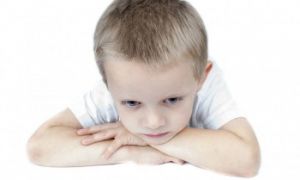In early childhood education, some of the most powerful interventions don’t come from elaborate programs or expensive resources. They come from the quiet, intentional words educators choose in moments of emotional intensity. When a child’s body is flooded with frustration, fear, or sadness, it’s not logic they need; it’s presence. And that presence often begins with a few carefully chosen words. This article explores how emotionally intelligent language, gentle presence, and intentional silence can transform a child’s experience of safety, identity, and belonging.
“You’re safe. I’m here.”
Educator Tahlia remembers a moment when a three-year-old, Ava, collapsed in tears after a parent drop-off. Instead of rushing to distract or “fix” the moment, Tahlia knelt beside her and whispered,
“You’re safe. I’m here.”
That was it. No lecture. No redirection. Just co-regulation through tone, proximity, and trust. Ava’s breathing slowed. Her shoulders softened. And within minutes, she reached for a book.
Naming the Feeling Without Naming the Child
Educators like Tahlia know that language shapes identity. Instead of saying, “You’re being naughty,” they say,
“It looks like your body is having a hard time.”
This subtle shift separates the child from the behaviour, allowing space for reflection and repair. It also models emotional literacy, giving children the vocabulary to name what’s happening inside.
The “Feelings First” Approach
In one centre, educators use a simple script during conflict:
- “What happened?”
- “How do you feel?”
- “What do you need?”
These three questions, repeated gently and consistently, have become a ritual. Children as young as four now initiate the process themselves, even drawing “feeling maps” to show what’s going on inside.
When Fewer Words Mean More
Sometimes, the most emotionally intelligent response is silence. Educator Jamal recalls a moment when a child threw a toy in frustration. Instead of reacting, he sat nearby and breathed audibly. After a pause, he said,
“That was a big feeling. Let’s figure it out together.”
The child nodded. No punishment. No shame. Just shared regulation and a path forward.
Why It Matters
These small moments—a pause, a phrase, a breath—are the architecture of emotional safety. They teach children that all feelings are welcome, that they are not alone, and that words can be tools for healing.
“We don’t need to say a lot,” Tahlia says. “We just need to say the right things — with heart.”
In a world that often demands speed and solutions, early childhood educators are quietly rewriting the script—one breath, one phrase, one moment at a time. This isn’t just pedagogy; it’s presence. And presence, when paired with emotionally intelligent language, becomes a powerful tool for healing and growth.
Further Reading
Encouraging Children to Express Emotions Appropriately
Teaching Emotional Vocabulary To Toddlers and Preschoolers
Feelings Toolbox
Teaching Children About Emotions
Tantrums Aren't the Enemy: Supporting Children Through Big Feelings
Connection Over Control: Gentle Strategies for Supporting Toddlers
30 Emotional Regulation Activities For Toddlers and Preschoolers







 As an Educator in Australia, your pay rate falls under the Children’s Services Award 2010. This award states the minimum amount that an employer can
As an Educator in Australia, your pay rate falls under the Children’s Services Award 2010. This award states the minimum amount that an employer can When working as a qualified Early Childhood Teacher (with a university degree) within a service, your rate of pay will come from the Educational Services
When working as a qualified Early Childhood Teacher (with a university degree) within a service, your rate of pay will come from the Educational Services When working as a Diploma Qualified Educator your pay rate is from the Children's Services Award 2010. This Award states your minimum rate of pay
When working as a Diploma Qualified Educator your pay rate is from the Children's Services Award 2010. This Award states your minimum rate of pay When working as a Cert 3 Qualified Educator, your pay rate is from the Children's Services Award 2010. This Award states your minimum rate of
When working as a Cert 3 Qualified Educator, your pay rate is from the Children's Services Award 2010. This Award states your minimum rate of Educational Leaders play a crucial role in their early childhood service by ensuring that the educational program aligns with best practices and supports the holistic
Educational Leaders play a crucial role in their early childhood service by ensuring that the educational program aligns with best practices and supports the holistic In early childhood education and care, ratios are more than a technicality—they are a frontline safeguard. Every child deserves responsive supervision, emotional connection, and developmental
In early childhood education and care, ratios are more than a technicality—they are a frontline safeguard. Every child deserves responsive supervision, emotional connection, and developmental Here’s a comprehensive Mobile Phone and Smart Watch Policy tailored for early childhood education and care (ECEC) services in Australia, aligned with the latest 2025
Here’s a comprehensive Mobile Phone and Smart Watch Policy tailored for early childhood education and care (ECEC) services in Australia, aligned with the latest 2025 With the new national child safety reforms kicking in on 1 September 2025, early childhood services like yours have a real opportunity to lead the
With the new national child safety reforms kicking in on 1 September 2025, early childhood services like yours have a real opportunity to lead the The Sea of Fish Challenge is a national initiative that invites children, educators, families, and communities to create and display fish artworks as a symbol
The Sea of Fish Challenge is a national initiative that invites children, educators, families, and communities to create and display fish artworks as a symbol Across the early childhood education and care sector, educators are sounding the alarm: current staffing ratios are insufficient to deliver safe, meaningful, and developmentally appropriate
Across the early childhood education and care sector, educators are sounding the alarm: current staffing ratios are insufficient to deliver safe, meaningful, and developmentally appropriate


